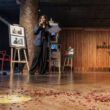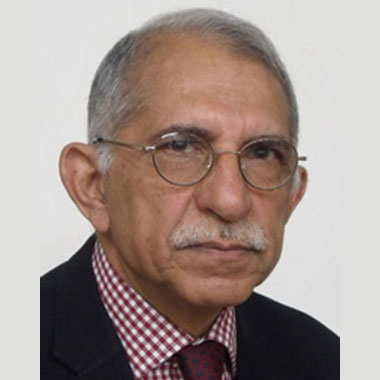Two key factors, as they grew, year by year, defeated Moi. First: the lawyers constantly held up the Alternative to Moi. Second: the lawyers suffered in the repression just as the people did. It made the people believe in the lawyers. It led to belief in the lawyers’ programme.
The First Alternative Programme
We put up two major alternative programmes. The first was legal – protection from and redress for, the gross violations of the existing Constitution. It grew into the second, which was a political programme – Constitutional reform. This challenged the political power base and legitimacy of Moi.
The regime reacted in the idiom of its political philosophy: any dissent was an attempted removal of Moi from power; it therefore justified removing such actors out of the political field, by whatever means was then in its best interests, not excluding the elimination of certain individuals.
Moi also studied opposition from a personal standpoint. He thought it was made up to make him look bad. The accusation of ‘ridiculing’ the President was a constant theme of detention orders, the condemnatory speeches of his lackeys, the fawning editorials of sycophantic newspapers and media. He did not realize that the initial (and continuing) programme of criticism by the lawyers was the programme of his own Constitution, that by which he himself had become President. He did not connect the lawyers’ demands to what his own Constitution prescribed – freedom of speech, freedom of assembly, freedom of expression, the Bill of Rights, the right to a fair trial, to counsel of the accused person’s choice, all of which he was violating flagrantly.
This wholly illegal approach was clearly reflected in the judgments of his lackey judges in the High Court. Sachdeva J in denying the bail application of Willy Mutunga (1986) Kenya Law Reports 167, at 170, purported to make this into law. This is what he posited:
‘It cannot be stressed too often that such [constitutional] rights exist and are enforceable, only where law and order prevails. Once peace and stability disappear such rights also go overboard without a whimper.’
We held up the alternative to this error, and others (‘There is no one above the law, save the President.’). We did this by comparing the Moi regime’s violation with the relevant provisions of its own Constitution and kept exposing the gap between the law and the regime’s own actions. We were thus challenging Moi’s illegalities and excesses with his own Constitution.
The Second Alternative Programme
But as the repression lengthened by his own adamant thinking, this alternative transformed. It became a demand for a new demand, the demand for a new Constitution. The historian, Daniel Branch, later wrote:
‘… the lawyers for their part brought two vital elements to this relationship [between the Churches and the lawyers].
First, the elite backgrounds of the lawyers and their defence of political prisoners supplied a link between civil society activism and political opposition of various shades.
Secondly, lawyers like Paul Muite, Kiraitu Murungi, Gibson Kamau Kuria, Gitobu Imanyara and Pheroze Nowrojee developed the criticisms of the queue-voting system into a broader debate about constitutional reform.’ (Daniel Branch Kenya: Between Hope and Despair, 1960-2011 (London, Yale U P, 2011, p182).
Further, we did this with every single case which we could file or which we could defend. Slowly the newspapers and even the state monopoly radio began to give a few lines to these defences and their outcomes, notwithstanding governmental disapproval of this. The effect after several years of this was to minimize the deterrent political purpose of these criminal cases, detentions and even extra-judicial executions. Every newspaper report of the numerous cases that Moi’s cohorts brought and Moi’s judges and magistrates perversely upheld came to achieve the opposite of deterrence. Each political case began to advertise the gap deeper and deeper, and wider and wider. From 1988 onwards the gap became more and more internalized by the millions of captive radio listeners and TV watchers, despite all these being under Moi’s control as the State then had a monopoly over the media. There were no fm stations or private TV channels at that time. Nor any social media.
Saba Saba 1990
As this internalization proceeded apace exponentially, Saba Saba 1990 loomed and became the natural funnel of this discontent. Hundreds of thousands of young people felt ready to express the demand to reject the gap they kept seeing, to end the repression and to obtain acknowledgement of the need for change. They had neither arms, nor money nor the freedom to organize a political party. They had something Moi could not understand: the readiness to walk to Kamukunji to give whatever was their all. And it was something more than Moi by then possessed – the spirit of liberty.
Even though the Saba Saba day meeting was ordered cancelled, he could not cancel this thinking of the young persons any more. Worse, the cancellation only confirmed to them the widening dimensions of the gap.
The Punishment of the Lawyers
The second key factor was that at that very time, 1988-1990, the people saw that the lawyers were also suffering the same punishments for opposing Moi as they themselves were and had been suffering. When they saw that the lawyers were also ready to suffer in the same way as themselves, those same punishments – torture, maiming, detention, false criminal cases, imprisonment, harm to families – they came to believe in the lawyers and in what the lawyers were saying.
Over the Moi period the people saw the targeted reprisals of the regime against the lawyers. Among the first lawyers to be detained was John Khaminwa. He was detained twice. Each time it was due to, and in the course of, his professional duties as an advocate. For these and his unhesitant struggle against injustice, Haverford College (in the USA) conferred on him its Honorary Degree of Doctor of Laws. Among other lawyers detained were Willy Mutunga, Lenny Gacheche, Gitobu Imanyara, Mohamed Ibrahim, Rumba Kinuthia, Gibson Kamau Kuria, Wanyiri Kihoro, He was detained twice. Each time it was due to and in the course of his porofesssional duties asa an advoicateJean Marie Seroney, Gupta Ng’ang’a, Thiong’o, Mirugi Kariuki. Gibson Kamau Kuria also was conferred with an Honorary LLD by the Lewis and Clarke Law School, (in the USA).
Defence advocates who were brought to courts with charges liable to imprisonment included Gitobu Imanyara (regularly and numerous times), James Orengo (regularly and numerous times), Japheth Shamalla, Paul Muite, Beatrice Nduta, GBM Kariuki (for contempt), Pheroze Nowrojee (for contempt), Mbuthi Gathenji, Martha (Njoka) Karua (for contempt), Wanyiri Kihoro, Willy Mutunga, Rumba Kinuthia, Mirugi Kariuki. Many of them suffered imprisonment, and long periods of imprisonment in so-called remand.
But this persecution by the Moi government was counter-productive. Each such prosecution only recruited more colleagues to defend, and took away more of the people from support for Moi. The lawyers also supported each other.
èAryeh Neier, long-time former head of the ACLU (American Civil Liberties Union), and then of Human Rights Watch, visited Kenya in this turbulent period. He sought the source of the resistance by the Kenyan lawyers. He wrote:
‘What inspires admiration, even awe, in an outsider is the unhesitating readiness of Kenya’s human rights lawyers to spring to one another’s defence at great risk to themselves. … Martha Njoka [Karua] and another young lawyer, Beatrice Nduta, are defence counsel for Mirugi Kariuki in the Treason Trial. On February 6 [1991] Nduta was herself arrested on a charge… . Twenty-nine Nairobi lawyers, led by Paul Muite, subsequently elected the Chair of Kenya’s Law Society, showed up in Court to defend her. As she told me the following week in Nairobi, when she returned to her office from court she found messages from several other lawyers complaining that they had not found out in time to appear on her behalf. The lawyer representing Imanyara on the sedition charge, Pheroze Nowrojee, was cited for contempt in another political case. More than seventy lawyers offered to appear on his behalf. When he declined such mass representation, more than 120 lawyers turned up in court and sat through the proceedings to observe and be observed. Another twenty attended at least part of the proceeding.’ (The NATION, April 1, 1991, p4/5).
Lawyers were the first group to speak up against Moi’s Dark Days, and they spoke the loudest and the longest. They then gave the politicians the major plank of the latter’s political programme – Constitutional Reform – and they defended every politician, as the repression moved against the new alliances like FORD, and to the defectors from KANU, and the new leaders in both. Why lawyers? Because of their work in the courts they were the first to come up against and see, false prosecutions, corrupt prosecutors, and the distorted judgements of compliant judges and magistrates going against their professional oaths.
Some of the lawyers joined this swamp, many remained silent. But enough were moved by their professional oaths and commitments to stand firm. These lawyers considered that opposition to repression and defending unjustly charged individuals, and upholding the Rule of Law, was a part of their professional obligation. In this, they were giving another example of what Nelson Mandela had identified during his 1962 conviction in Pretoria, when he said:
‘I regard it as a duty which I owed, not just to my people, but also to my profession, to the practice of law, and to justice for all mankind, to cry out against this [Apartheid], which is essentially unjust … I believed that in taking up a stand against this injustice I was upholding the dignity of what should be an honourable profession. … Our consciences dictate that we must protest against it, that we must oppose it, and that we must attempt to alter it.’
A very large number of cases, though not all, were done pro bono. A corrupt judiciary was faced fearlessly. But behind the corrupt judiciary was a ruthless executive. Taking on the judiciary was taking on the State. It was done; but at great cost, and continuing injury and loss. Lawyers were directly targeted, as recorded above. But also, and regularly, spouses and families too. The education of children was blocked.
Moi tried to overcome the lawyers’ efforts in the courts, by bringing persons to courts after Court hours. So the Attorney-General’s and police prosecutors brought accused persons to courts at 6 p.m. or later, when lawyers were usually not available. There were compliant magistrates who kept their courts open late specially for this purpose. Prosecutors and courts did this without informing the accused person or anyone connected to him. The effect was to deny legal representation to those accused persons, and to cover up the many pleas of guilty agreed to through torture and false promises and inducements. Only to find Advocate John Khaminwa waiting at one entrance of the High Court building, and Advocate Paul Muite at the other, both ready to appear for these accused persons being dragged in to the pre-arranged illegal court. Guerillas do have the strength to infiltrate dictators’ forces and move swiftly, and effectively, in response. Which these lawyers did!
Conclusion
The consequences of the national opposition which surfaced on Saba Saba 1990, and the ongoing long and painful struggle of the Law Society of Kenya and the individual lawyers, were far-reaching. Among them, were the transformation of the issues and the transformation of the huge public support for the protection of accused persons into national support for the rejection of the repressive One Man, One Party Rule. This led first to the great return to Multi-Party politics, and then eventually to the new Constitution of Kenya 2010. And it all started with a relatively few urban-guerilla lawyers and millions of young persons with belief in a just Kenya by just means, all of whom were ready to suffer till victory and a freer Kenya came. They returned the next year to Kamukunji and to the triumph of Multi-Partyism.








